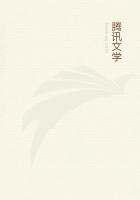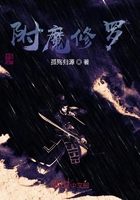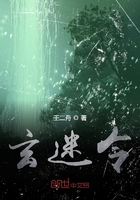Let any one take, say that smallest sketch of the hapless mortal who has turned on the hot water in the bath and cannot turn it off again, and see if he is able to restrain his laughter. In this one gift of producing instant mirth Leech is almost alone. It would be easy to assail his manner and his skill, but for sheer fun, for the invention of downright humorous situation, he is unapproached, except by Cruikshank. He did a few illustrations to Dickens's Christmas books; but his best-known book-illustrations properly so called are to "Uncle Tom's Cabin," the "Comic Histories" of A'Beckett, the "Little Tour in Ireland," and certain sporting novels by the late Mr. Surtees. Tenniel now confines himself almost exclusively to the weekly cartoons with which his name is popularly associated. But years ago he used to invent the most daintily fanciful initial letters; and many of his admirers prefer the serio-grotesque designs of "Punch's Pocket-Book," "Alice in Wonderland,"and "Through the Looking-Glass," to the always correctly-drawn but sometimes stiffly-conceived cartoons. What, for example, could be more delightful than the picture, in "Alice in Wonderland," of the "Mad Tea Party?" Observe the hopelessly distraught expression of the March hare, and the eager incoherence of the hatter! A little further on the pair are trying to squeeze the dormouse into the teapot; and a few pages back the blue caterpillar is discovered smoking his hookah on the top of a mushroom. He was exactly three inches long, says the veracious chronicle, but what a dignity!--what an oriental flexibility of gesture! Speaking of animals, it must not be forgotten that Tenniel is a master in this line. His "British Lion," in particular, is a most imposing quadruped, and so often in request that it is not necessary to go back to the famous cartoons on the Indian mutiny to seek for examples of that magnificent presence. As a specimen of the artist's treatment of the lesser felidae, the reader's attention is invited to this charming little kitten from "Through the Looking-Glass."Mr. Tenniel is a link between Leech and the younger school of "Punch" artists, of whom Mr. George du Maurier, Mr. Linley Sambourne, and Mr. Charles Keene are the most illustrious. The first is nearly as popular as Leech, and is certainly a greater favourite with cultivated audiences. He is not so much a humorist as a satirist of the Thackeray type,--unsparing in his denunciation of shams, affectations, and flimsy pretences of all kinds. A master of composition and accomplished draughtsman, he excels in the delineation of "society"--its bishops, its "professional beauties"and "aesthetes," its nouveaux riches, its distinguished foreigners,--while now and then (but not too often) he lets us know that if he chose he could be equally happy in depicting the lowest classes.
There was a bar-room scene not long ago in "Punch" which gave the clearest evidence of this. Some of those for whom no good thing is good enough complain, it is said, that he lacks variety--that he is too constant to one type of feminine beauty. But any one who will be at the pains to study a group of conventional "society" faces from any of his "At Homes" or "Musical Parties" will speedily discover that they are really very subtly diversified and contrasted. For a case in point, take the decorously sympathetic group round the sensitive German musician, who is "veeping" over one of his own compositions. Or follow the titter running round that amused assembly to whom the tenor warbler is singing "Me-e-e-et me once again," with such passionate emphasis that the domestic cat mistakes it for a well-known area cry. As for his ladies, it may perhaps be conceded that his type is a little persistent. Still it is a type so refined, so graceful, so attractive altogether, that in the jarring of less well-favoured realities it is an advantage to have it always before our eyes as a standard to which we can appeal.
Mr. du Maurier is a fertile book-illustrator, whose hand is frequently seen in the "Cornhill," and elsewhere. Some of his best work of this kind is in Douglas Jerrold's "Story of a Feather," in Thackeray's "Ballads," and the large edition of the "Ingoldsby Legends," to which Leech, Tenniel, and Cruikshank also contributed.















